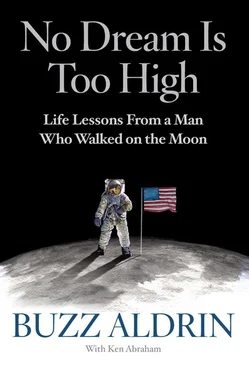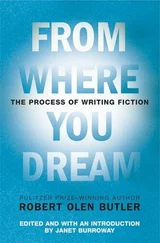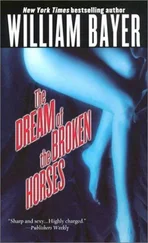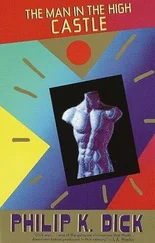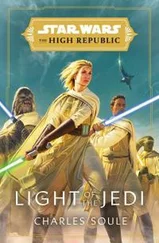The first time I applied to be an astronaut, NASA turned me down. I was not a test pilot, they said, and at that time, NASA wanted only test pilots. Other people, no matter how bright or how talented, need not apply. Sure, I was disappointed, but I was determined and I knew the sky was not the limit, so I applied again.
This time, my jet fighter experience and NASA’s interest in my concepts for space rendezvous influenced them to accept me in the third group of astronauts, eight men drawn from more than 6,000 applicants.
My MIT rendezvous studies really paid off. I knew that the critical key to our success would be our ability to separate the lunar landing module from a launch-and-reentry “mother ship,” a command module, land it on the Moon’s surface, then lift off and reliably rendezvous the two spacecraft in orbit around the Moon, a risky maneuver. If it failed, there would be no way to rescue the astronauts who had landed. Luckily, my MIT work was exactly what was needed to help figure out these complicated rejoining procedures. I thought about space rendezvous; talked about space rendezvous; ate, slept, and dreamed about space rendezvous so much that I became known to my astronaut peers as “Dr. Rendezvous.”
Mercury was the first phase in the American space efforts, followed by the Gemini program, which helped us refine our skills and maintained the nation’s fascination with space travel while the rockets were being developed for Apollo, the program that we hoped would take us to the Moon. Gemini was an integral part of our training, as it helped us learn to spacewalk. As an avid scuba diver, I was the first astronaut to train underwater to simulate weightlessness in space. Although not identical to the sensations in space, practicing movements underwater in neutral buoyancy and attempting to maneuver while wearing a bulky backpack gave me great confidence and helped me to overcome the challenges I thought I might experience once outside the space capsule.
During my first spaceflight as pilot of Gemini 12, I set a world record for spacewalking—which was actually more of a space float , rather than a five and a half hours’ “walk” in space—tethered to the spacecraft by a single, long umbilical cord that provided life support, while circling the globe every 90 minutes at a speed of 17,500 miles an hour. Because there is no air in space, there was no resistance, so the spacecraft and I drifted along at the same tremendous speed. What a sight to behold the Earth below while floating outside our spacecraft! It was such a fabulous ride, I only reluctantly climbed back inside our Gemini 12 spacecraft when it was time to come home, but not before I pulled a prank on Jim Lovell.
Most people know that astronauts are competitive with each other, even those working together as crewmates, as were Jim Lovell and I on Gemini 12. Knowing that I was scheduled to perform a space walk during our flight, I had packed a banner reading “BEAT NAVY” among my personal items. I was a West Point grad, and an Air Force fighter pilot, and Jim was a Navy guy. So while I was outside doing my space walk, I took the banner with me and unfurled it, holding it up to the Gemini 12 window so Jim would have to read “Beat Navy.” I still have that banner to this day, not to mention a hefty dose of competition with the Navy and with Jim!
During the same space walk, I took what would become known as the first “selfie” in space! But I’ll tell you more about that later.
After nearly four days in orbit, Jim Lovell and I returned to Earth, having completed the final mission in the Gemini program. It was November 1966, and we had only three years remaining to accomplish President Kennedy’s challenge to land a man on the Moon by the end of the decade. Gemini had prepared us for the Apollo missions to the Moon, but we still had a lot of work to do.
Neil Armstrong, Michael Collins, and I were chosen as the crew for Apollo 11, which would turn out to be a uniquely historic mission. Neil and I had worked together as the backup crew for Apollo 8, the first mission to reach the Moon, although not landing on the surface. Mike was originally part of the Apollo 8 crew, but due to back surgery, he had to be replaced, and he missed the opportunity. A great guy, a hard worker, and a real team player with a quick sense of humor, Mike had studied and trained diligently for Apollo 8, so I was not surprised when Neil chose Mike for our crew. He was an excellent choice.
For six months, we worked every day and prepared as best we could for this fascinating trip into the unknown. At last, the day came when the enormous Saturn V rocket was rolled out from the huge Vehicle Assembly Building, inching along on a giant transport platform, slowly making its way to the launchpad.
On July 16, 1969, our launch day, at 9:32 a.m. the engines ignited and roared with more than 7 million pounds of thrust, lifting 3,000 tons of spacecraft, fuel, equipment, and, oh yes—three very fortunate human astronauts on their way to another celestial body.
As we cleared the gantry and rocketed skyward, we were pressed into our seats as the rapid acceleration of the rocket increased our body weight. Within three minutes, we were 45 miles high, experiencing 3½ g’s—the force making our bodies feel increasingly heavier than on Earth—and accelerating to nearly 6,500 miles an hour. A minute later, we passed through the 62-mile threshold, where the blue sky turns to the blackness of space. By 12 minutes after launch, we were traveling at more than 17,000 miles an hour, the speed required for us to orbit the Earth. For the next three hours, we circled around our home planet and ran through checklists to make sure that everything in our spacecraft was working properly. Then we fired the rocket engine that accelerated us to 25,000 miles an hour on a trajectory bound for the Moon.
During the eight-day round-trip journey, Mike, Neil, and I lived in a space capsule about the size of a standard automobile interior—a small vehicle not much larger than a Volkswagen van. If all went as planned, Neil and I would spend a portion of that time landing on and exploring a small part of the lunar surface.
* * *

ON DAY THREE, WE FIRED OUR ENGINE to slow us down enough for the Moon’s gravity to capture us and draw us into lunar orbit. Another engine burn put us in the right orbit for a landing.
Thirteen orbits of the Moon later, on the morning of Sunday, July 20, 1969, Neil and I entered the lunar landing craft we had named the Eagle . We carefully separated our new home from the command module, Columbia , where Mike remained. Piloting our powered descent to the Moon’s Sea of Tranquility was the most complicated and critical aspect of the whole mission. Landing was the hard part.
As we descended, we saw that our planned landing site was filled with large boulders surrounding a crater that Neil estimated to be more than a hundred feet wide, with steep slopes, so we continued maneuvering the Eagle , hoping to find a safe area on which to land. This unexpected extension of our trip expended additional fuel, so after traveling 240,000 miles to reach the Moon’s surface, we were dangerously low on fuel and within seconds of having to either abort the mission or crash onto the lunar surface. Hovering above the Moon’s surface like a slow-moving helicopter, Neil finally spied what appeared to be a safe landing spot. When we finally touched down, we had only 15 to 20 seconds of fuel remaining!
Neil and I breathed a little easier but we couldn’t relax. We shook hands—we had done it; we had landed on the Moon! But this was no time for a victory party; we quickly went through our flight checklist. It was absolutely essential that we not allow our emotions to overwhelm us or cloud our thinking as we followed our planned procedures in case we had to make a hasty departure from the Moon, using an entirely different rocket engine from the one we’d used for our descent. Finally, I paused long enough to glance out the window at the black velvet sky and the ash gray, pockmarked terrain on which we had landed. With our engines shut down, we were surrounded by a celestial silence; the only sound I could hear was my own breathing.
Читать дальше
